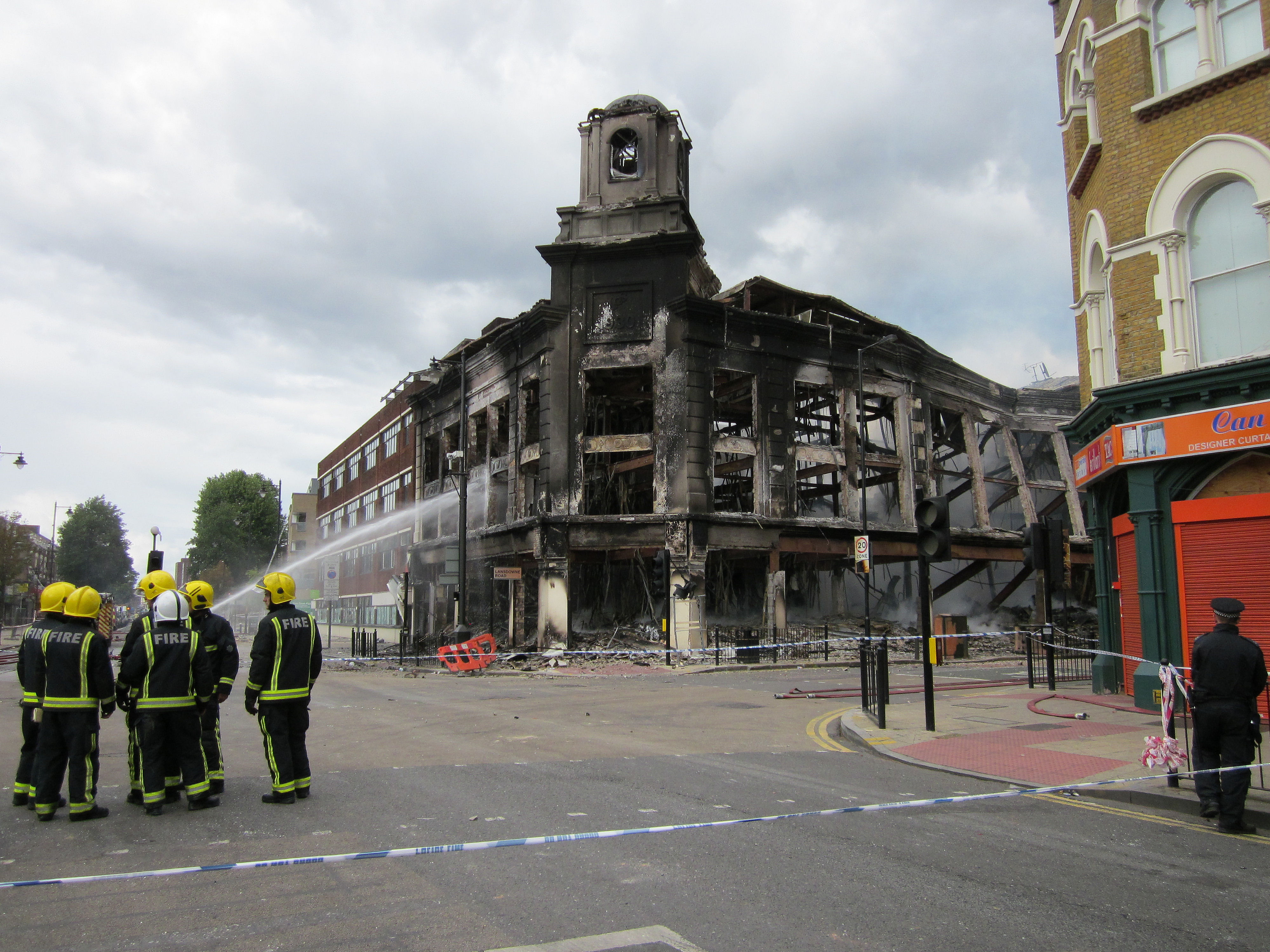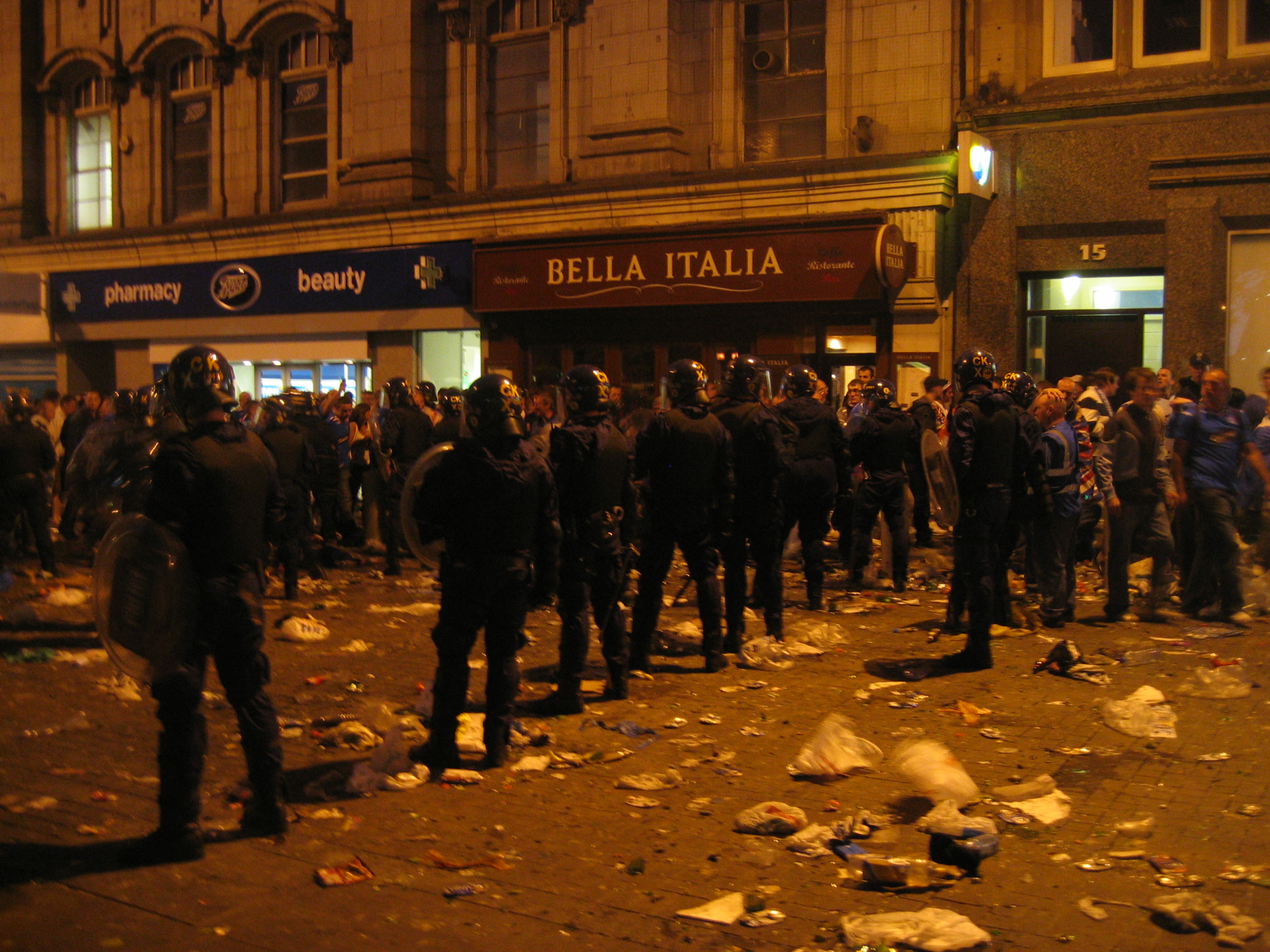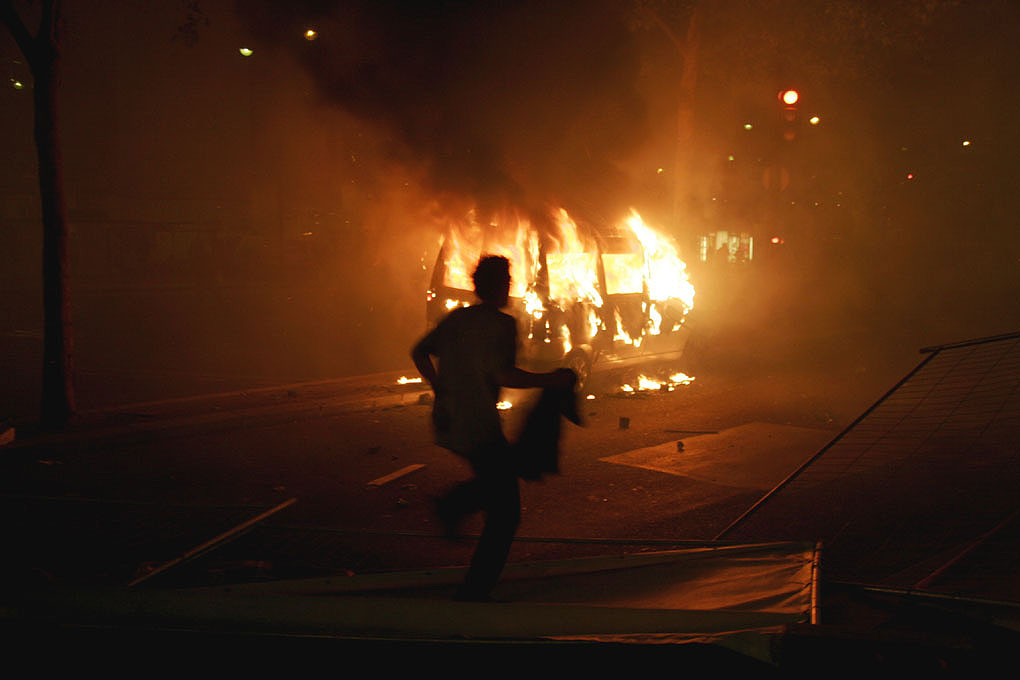Difference between revisions of "Security issue: Destruction by riots"
| Line 36: | Line 36: | ||
|- |
|- |
||
| High levels of unemployment || Increases likelihood social unrest || High levels of unemployment decrease social stability which can act as an agent for riots to develop. |
| High levels of unemployment || Increases likelihood social unrest || High levels of unemployment decrease social stability which can act as an agent for riots to develop. |
||
|- |
|||
| Presence of high levels of crime || Increases probability of riots || Street riots commonly occur in places where crime is a serious and chronic problem<ref name="celebratory"/>. |
|||
|- |
|- |
||
| Presence of crowds || Decreases likelihood of apprehension || It has been argued that large crowds cause individuals to act aggressively and without restraint because they confer anonymity<ref>Weatherburn Don, ''Riots, Policing and Social Disadvantage: Learning from the Riots in Macquarie Fields and Redfern'', Current Issues in Criminal Justice Volume 18 Number 1, July 2006</ref>. Furthermore, The impact of the crowd includes “deindividuation,” in which there is a mob mentality and people no longer act as individuals but rather as a group. People do things in this state that they would not otherwise do<ref name="celebratory"/>. |
| Presence of crowds || Decreases likelihood of apprehension || It has been argued that large crowds cause individuals to act aggressively and without restraint because they confer anonymity<ref>Weatherburn Don, ''Riots, Policing and Social Disadvantage: Learning from the Riots in Macquarie Fields and Redfern'', Current Issues in Criminal Justice Volume 18 Number 1, July 2006</ref>. Furthermore, The impact of the crowd includes “deindividuation,” in which there is a mob mentality and people no longer act as individuals but rather as a group. People do things in this state that they would not otherwise do<ref name="celebratory"/>. |
||
Revision as of 16:07, 2 April 2013
Destruction by riots is the act of vandalism of property by organised groups for a shared rational or rationalised reason.
Contents
Description
Riots are physical expressions of discontent by large unorganised groups of people, expressed in vandalism, assault and/or pillaging. Although the riot may be unorganised, the reason for these people being there may well be.
Three types of riots can be distinguished by their origin:
Organised protests
Sometimes peaceful, organised protests can quickly turn into unorganised and destructive riots. Examples of such events are the 2011 events in Tottenham, London[1] or the riots in Rome in October 2011[2].
In these cases the protest, especially when arousing stormy emotions, can turn into a riot when external circumstances provoke strong and emotional responses.
Events
Events which arouse strong emotions, especially when aggravated by a strong sense of competition or the use of alcohol, can disinhibit natural restraint and lead to group processes that can lead to excessive violence. The sport of football has a long history of riots associated with it[3].
These kinds of riots are often associated with a group of agitators, known as hooligans, who instigate such violent actions.
Social unrest
Felt social wrongs can build a common frustration that can release itself in sometimes very violent and wide-spread riots. The 2005 Paris civil unrest, which resulted in a three-month declaration of the state of emergency[4].
Contributing circumstances
Known circumstances to influence the likelihood or effect of graffiti, are presented in the table below:
| Contributing Circumstance | Influence | Description |
|---|---|---|
| Use of alcohol. | Decreases inhibitions | The initial response of alcohol may be calming, but once an aggressive trigger is present, people who have been drinking are quicker to respond in violent ways[5]. |
| Excitement and competition. | Increases likelihood of emotional response. | Aggressive behaviours are more likely to occur after aggressive games.[5] |
| Previous acts of riot/Tradition of riots (f.e. annual) | Increases probability of riots | A tradition of rioting can set the stage for new riots breaking out. |
| Long reaction times or inadequate action of intervention force. | Decreases likelihood of apprehension | Intervening in an 'explosive' emotional situation is very tricky; the wrong response can easily trigger an adverse effect and worsen the situation. Providing support for intervention forces allowing them to react before an explosive situation arises is therefore very important. |
| High levels of unemployment | Increases likelihood social unrest | High levels of unemployment decrease social stability which can act as an agent for riots to develop. |
| Presence of high levels of crime | Increases probability of riots | Street riots commonly occur in places where crime is a serious and chronic problem[5]. |
| Presence of crowds | Decreases likelihood of apprehension | It has been argued that large crowds cause individuals to act aggressively and without restraint because they confer anonymity[6]. Furthermore, The impact of the crowd includes “deindividuation,” in which there is a mob mentality and people no longer act as individuals but rather as a group. People do things in this state that they would not otherwise do[5]. |
| Presence of protest demonstrations | Increases likelihood of riots forming | In areas where protest demonstrations are regularly held, the likelihood of one such demonstration turning into a riot is always present. |
- Alcohol
- Excitement
- Previous acts of riot/Tradition of riots (f.e. annual)
- Competitive atmosphere
- Provocation
- Bad socio-economic circumstances (poverty, inequality of income, high unemployment, poor schools, poor healthcare, housing inadequacy, etc.) and lack of economic opportunity
- Youth (?)
- Racism/Ethnic/religious causes
- Lack of community, ownership or connection/identity with the area
Impacts
Social impact
- Loss of perceived security
- Increase of likelihood of re-emerging
- Social effects
Economic impact
Riots lead to considerable costs in both a direct (primary) and a indirect (secondary) way[7]. Direct costs of destruction by riots come in the form of:
- Preventive costs in anticipation of riots (e.g. security measures, insurance);
- Material and immaterial costs as a consequence of rioting (e.g. physical damage, repairs, medical costs, mental harm)[8]; and
- Responsive costs to riots (e.g. the costs of detection and prevention, prosecution, support trial, etc.).
In addition, the secondary economic impact of crime has to be considered:
- Riots make investors nervous: "Although the Thai stock market has recovered strongly this year, investors saw a 10% drop while the rioting was going on (in 2010)[9]. "Moreover, while Thailand no doubt benefited from its reputation as a peaceful and relatively orderly country, countries with chronic troubles risk getting labelled as "basket cases" and virtually eliminated from serious consideration as investment destinations"[10].
- Rioting also has a distinct impact on tourism. "China reported that disturbances in Xinjiang in 2009 led almost 85,000 travellers to cancel trips to the area, while Thailand has seen a big drop in tourism since its political troubles turned violent"[11] in the spring of 2010.
Mobility impact
Safety impact
- Bodily harm
- Physical damage
Measures
Suveillance: Measures like video cameras may have some effect on deindividuation if spectators know they are there.[5]
- Ensure compatibility and balance of land use and activities
- Ensure controllability of alcohol distribution
- Provide alternative entertainment
- Limit possibilities for gathering of crowds (parking capacity?)
- Provide opportunities for regulation of traffic flow (flexible measure)
- Provide transportation facilities to and from the event
- Consider levels of permeability if it would facilitate natural crowd dispersion
- Establish a clear and controllable perimeter for the gathering
- Include highly visual clues to strict law enforcement [12]
Footnotes and references
- ↑ see: http://www.guardian.co.uk/uk/2011/aug/07/tottenham-riots-peaceful-protest
- ↑ see: http://www.italymag.co.uk/italy/riot/peaceful-protest-dissolves-riots-rome
- ↑ see: wikipedia:Football hooliganism
- ↑ see: wikipedia:2005 civil unrest in France
- ↑ 5.0 5.1 5.2 5.3 5.4 U.S. Department of Education’s, Report of the Proceedings, National Conference Addressing Issues Related to Celebratory Riots, November 20–21, 2003
- ↑ Weatherburn Don, Riots, Policing and Social Disadvantage: Learning from the Riots in Macquarie Fields and Redfern, Current Issues in Criminal Justice Volume 18 Number 1, July 2006
- ↑ Primary economic impact (or direct effects) are generally defined as the initial, immediate economic output generated by a specific cause (in this case a criminal offence). Secondary economic impact (or indirect effects) are generated each time a subsequent transaction is made, for example, the impact of crime on the real estate value in the neighbourhood.
- ↑ For example: In 2005 the civil unrest in France lasted for over three weeks and spread to nearly 300 towns. By the end of the incident, over 10,000 vehicles were destroyed, over 300 buildings burned, 126 police and fire-fighters were injured, and damages were estimated at being well over €200 Million (Source: Wikipedia)
- ↑ Investopedia, http://www.investopedia.com/financial-edge/1210/how-riots-influence-an-economy.aspx#axzz2Dd7xpsbL
- ↑ Ibid
- ↑ http://www.investopedia.com/financial-edge/1210/how-riots-influence-an-economy.aspx#axzz2Dd7xpsbL
- ↑ Student Party Riots Guide No.39 (2006) by Tamara D. Madensen & John E. Eck
- ↑ Report of the Proceedings prepared by the U.S. Department of Education’s Higher Education Centre for Alcohol and Other Drug Abuse and Violence Prevention with funding from The Network: Addressing Collegiate Alcohol and Other Drug Issues
- ↑ Doc. 11685 8 July 2008 Riots in European cities: lessons and Council of Europe response Report Social, Health and Family Affairs Committee Rapporteur: Mr Roland BLUM, France, Group of the European People’s Party
- ↑ [Policing and Social Disadvantage: Learning from the Riots in Macquarie Fields and Redfern, Don Weatherburn]
- ↑ [Tottenham riots: a peaceful protest, then suddenly all hell broke loose (Guardian)]


